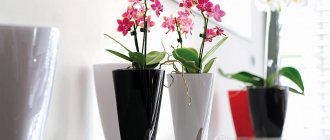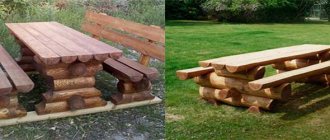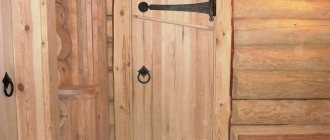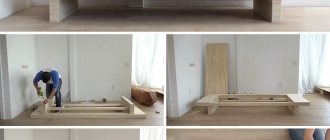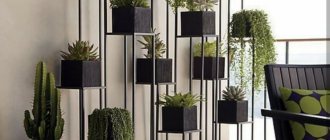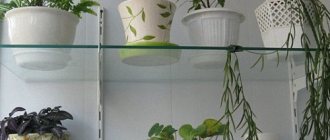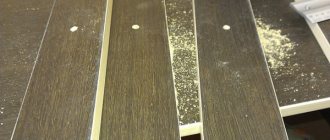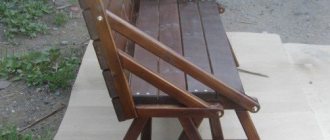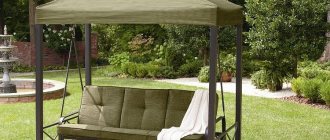Indoor flowers have long become an integral part of the interior. With their help, the room becomes more beautiful and comfortable.
In addition, indoor flowers, unlike outdoor ones, are pleasing at any time of the year.
In addition, indoor plants have the unique ability to saturate the room with oxygen and make it more humid. But in order for indoor flowers to become a full-fledged element of interior decor, they need to be beautifully decorated.
Pots for flowers can cope with this task, especially nowadays their range is so huge that it is possible to choose the design for indoor plants not only of any color and shape, but also of any style.
A pot for indoor flowers has one significant difference from a flower pot; it does not have drainage holes, so the flower can be placed in it anywhere.
And a large selection of designs and materials for making flowerpots, which allows you to choose the right option for any interior.
The most common flowerpots are made of wood, glass, ceramics and plastic. Recently, multifunctional flower pots have appeared, such as flower pots with built-in lighting, like the flower pots in the photo.
Flower pots
The pots are selected based on the individual preferences of the housewife, but there are rules that must be followed, one of them is the size of the pots, and the second is the material.
To determine the size of the flowerpot you need, you must first measure the pot that will be inserted into it and add 2 cm to the result.
As for materials, the most common materials for making flower pots are metal, plastic and wood.
Regarding outdoor flowerpots, they are made from materials that can withstand any vagaries of weather, for example, earthenware or clay flowerpots.
The most popular are ceramic pots, because they come in different colors and with different patterns. It’s easier to choose such a pot to match your interior.
The most economical and easy to care for are plastic flower pots, and they will fit perfectly into any interior.
How to decide on the choice of “home” for flowers?
- For lovers of time, as well as people who are often absent from home, a pot with automatic watering is ideal.
- To decorate the porch of a house or path in the yard, it is better to use pots; excess water will go into the ground through the holes.
- To decorate the walls, it is better to choose a flowerpot, this way you can avoid water spills;
- Any flowerpot that matches the design of the room is suitable for decorating offices of public and private institutions.
Thus, when choosing containers for plants, the following differences should be taken into account:
| Flowerpots | Pot |
| Mainly serves a decorative function | It is highly practical and acts as a container for plants. |
| As a rule, there are no drainage holes. Modern models have holes and plugs for them | There are holes at the bottom |
| Excess liquid is drained into the pots | A tray or plate should be placed under it |
| Various raw materials for production | Made from clay or plastic |
| Has stylish options with a variety of colors and decors | The appearance is the most common |
| Not suitable for outdoor landscaping | Suitable for indoor and outdoor spaces |
HOW TO CHOOSE THE CORRECT FLOWER POT. MISTAKES WHEN CHOOSING A FLOWER POT (1 video)
Pots and flower pots (10 photos)
Flowerpots in the room
The design of pots for indoor flowers should harmoniously fit into the style of the room, so if we consider the interior of the room in a strictly styled manner, then a pot of a neutral color palette with a simple design is selected to match it. And in a children's room it is better to put a flower in a bright pot.
In a room where there are several or a group of plants, all pots should be in the same color palette and the same stylistic solution.
You also need to take into account that plants can be arranged not only in the standard way, so you can use hanging flowerpot structures, especially if there is little space in the room or if we are talking about climbing flowers. Floor-mounted flower pots are the ideal solution for large plants.
A rather original idea, flower pots that are mounted directly into furniture, however, despite the obvious advantages, such as saving space, such a pot has its drawback, which is associated with the difficulty of caring for flowers.
Wooden plant pot with twine
An old wooden pot will sparkle with new colors if it is decorated with twine. To do this, you need to apply glue to the surface and slowly press the rope, wrapping it around the pot. It is very important to secure the rope at the end so that the product does not lose its original shape.
By pre-drilling holes for the rope, you can build a hanging planter with your own hands. To do this, you need to carefully thread the string through the holes and secure it well.
Planter made from old bird cages
An old birdcage will make a wonderful flower pot. If you feel sorry to throw away this item, but the bird no longer lives there, turn the cage into a home art object. First, wash it, dry it, then arm yourself with this:
- acrylic paint of the desired color;
- brush;
- gloves.
Do not dilute the paint with water, even if it has thickened slightly.
Then the color will be more saturated. Cover the cage bars with paint and let it dry. To get less dirty with paint, start covering the rods from the inside first, then from the outside. Choose a shade that blends in with your surroundings.
Paint inside through the bird door. If the cage is collapsible, lay it out and cover its individual elements with tone. After the paint has dried, place 1-3 flower pots inside, preferably with young vines. When they grow up, they will beautifully wrap themselves around the cage, clinging to the bars.
See what interesting and unusual materials you can use to make a flowerpot and a large plant pot to place in your winter garden or dacha.
What to make pots and flowerpots with your own hands
Almost everyone grows indoor plants or flowers in their garden. The market is replete with many bright and original types of flower pots, but every person wants to add some zest to their home or garden, to show their individuality.
For example, it looks very unusual if ordinary flower pots are placed in an unusual flower pot - a floor-standing (high) one. You can make your own flower pots. There are a huge number of design options; all you have to do is choose the material and create.
Old shoes
There are several ways to repurpose unwearable shoes into a stylish flowerpot. This must be done with caution, since any flowers need suitable soil, a special watering regime, fertilizing and quality lighting.
You need to choose:
- pot of the right size;
- disposable cup;
- a bottle or box suitable in size to the inner space of the shoe.
Creeping plants such as bindweed, ivy, and mouse peas will quickly camouflage these adaptations as they grow.
If you want to embody the idea “in the original”, you must:
- Line the inside of the fabric shoes with plastic wrap or insert a plastic bag. If it is rubber or plastic, you don’t need to invest anything.
- Next, use an awl to make through holes in the sole to allow excess moisture to escape.
- Then pour pebbles inside the shoes, followed by a layer of earth.
- Plant your favorite plants and place the container in the shade for a while to acclimatize.
It should be noted that the smaller the shoes are selected, the more drought-resistant the plant should be. The ideal option would be cacti, juveniles and other succulents.
Cement, rag and burlap
Very original flowerpots can be made from unnecessary rags and cement.
To do this, you need to moisten an old unnecessary fabric in liquid cement mortar, level it on an inverted bucket or other object whose shape you want to give to a flowerpot, and leave to dry.
When the product is dry, it can be painted or left as is.
Tin can garden
Interesting pots for petunias can be made from small tin cans. To do this, the jar needs to be cleaned inside and outside of dirt and rust, and then decorated using acrylic paints, shells, buttons, eggshells, ice cream sticks and other available materials.
Kettle
If there is an old teapot in the house, do not throw it away - it can make a beautiful decoration for your garden plot. In addition, such an original pot made by yourself will save money.
You can return the teapot to its original appearance using a can of acrylic or aerosol paint, and you can also additionally apply various patterns to the surface using a stencil.
If you don’t want to bother with painting the kettle, you can leave everything as it is, since worn and tarnished metal also has a special charm. You can polish it - a cold metallic shine will look no less beautiful.
Polymer clay
To create a polymer pot you will need clay of any color, as well as a knife, a teaspoon or ice cream scoop and any plant.
Manufacturing process:
- Roll out a ball of clay and adjust its size.
- Mark the outline of the future hole with a spoon and carefully, little by little, pick out the clay from the middle.
- Turn the resulting product upside down and cut it on five sides with a knife, forming edges. If desired, you can leave it round.
- Flatten the bottom of the pot.
Wicker
You can weave a flower pot from ordinary rope. The shape of the product can be different - cylindrical, round or cone-shaped - the main thing is that the plant fits freely in it.
As a material for weaving, you can use threads of artificial rattan or thin branches of a vine.
Mosaic flowerpot
Beautiful and original pots can be made using the mosaic technique. Shells, small pebbles, fragments of porcelain dishes or multi-colored glass are used as mosaics. They can decorate both small pots and large flowerpots.
In addition to the material for the mosaic, you will need:
- tin base (tin can or bucket);
- mounting grid;
- plaster;
- grout for tiles.
Manufacturing technique:
- Cover the tin can with plaster, and then wrap it with a mounting mesh, previously lowered entirely into the plaster mixture.
- Lay out the entire surface of the future pot, with the exception of the bottom, with the prepared “mosaic”.
- Leave the product until completely dry.
- Treat the surface with tile grout to make the pot smooth. This also removes cracks and gaps between mosaic elements.
- Remove grout residues from the surface with a soft cloth.
Tree
To turn an unsightly stump into an original flowerpot, all you need is a drill and a chisel.
Stages of making a wooden flowerpot:
- First you need to determine the size of the future pot. The best height for a floor flowerpot is 40 centimeters. Mark the surface of the hemp and cut off the excess with a chainsaw.
- Next, drill holes as close to each other as possible around the entire perimeter.
- Using a chisel, remove the inner wood until the depth of the flowerpot reaches the desired dimensions. The thickness of the walls will depend on the strength of the stump itself.
- Place a suitable sized plastic or ceramic pot inside. You can do it differently: use a paint brush to treat the inner surface of the workpiece with stain, and after drying, cover the recess with polyethylene.
- Now you can fill the soil and plant flowers.
Using the same principle, you can make a flowerpot from an old log, only you need to make a recess along.
From one large stump you can create a whole composition of several flowerpots, which will resemble a flower garden:
- Cut the stump into several parts.
- Attach them to pre-treated stands.
- The sawn parts can be arranged in several rows, fastened from the inside, as well as the rows themselves, using a construction stapler. Each new row should be placed so that the seam appears offset.
- Place any container of a suitable size inside, then fill it with soil.
Coconut
Coconut is a fairly durable and reliable material for making flower pots. Coconuts are ideal for planting succulents and cacti in them, which do not require frequent watering, since high humidity can cause the nut shell to crack.
Coconut flowerpots can also be used for other indoor plants, if you drill not 2-3 holes in them for drainage, but several more, so that the water does not stagnate after watering.
To make a pot you will need:
- coconut;
- several medium-sized self-tapping screws or self-tapping screws;
- hacksaw for metal.
There is a small hole on one side of the coconut - you need to pick it out with a knife and pour out the milk. Then saw the nut - be sure to cross it, otherwise it may crack.
There are two cutting options:
- If you cut a nut exactly in the middle, you will get two identical halves - two pots. You can use any fancifully curved piece of driftwood as a stand, screwing the pots to it with screws. It is advisable not to twist them too tightly so that the shell does not burst.
- If you cut off just the top of the coconut with a grinder, it will serve as a stand for the pot. Then you need to make a hole in the center of the cut off top, place it with the cut side down and screw the pot to it with a screw - you will get a goblet-shaped shape.
If desired, the outside of the shell can be cleaned of protruding fibers and treated with sandpaper, and then varnished. Be sure to pour broken brick or expanded clay onto the bottom of the pot for drainage. Sprinkle substrate on top. Now you can plant the plants.
Such interesting compositions will look good in any interior. Large coconuts can be made into hanging baskets and used as planters.
Felt and wine corks
You can create a whole mini-cactus garden from wine corks. In general, cork pots are suitable for growing any slow-growing plants.
To implement a non-standard idea for decorating a flower pot, you need to select the core of the cork with a knife, pour soil into it - and the mini-pot is ready. Its beauty is that such a flowerpot can be attached in any, even the most unexpected, place - for example, on the refrigerator. But to do this you need to glue a powerful magnet to it.
